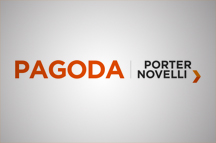 First Minister, Nicola Sturgeon, has announced that a second independence referendum could be held between autumn 2018 and spring 2019.
First Minister, Nicola Sturgeon, has announced that a second independence referendum could be held between autumn 2018 and spring 2019.
Explaining the move, the First Minister said “Brexit has made change inevitable. The option of no change is no longer available. However, we can still decide the nature of that change.”
Next week, following the SNP’s party conference in Aberdeen, she will seek the authority of the Scottish Parliament to request a Section 30 order from Westminster for another referendum bill. Green Party support guarantees that the S30 request will be passed at Holyrood.
Ms Sturgeon claimed that, despite her best efforts to secure a compromise with the UK government she had met with “a brick wall of intransigence” from Theresa May. The language of partnership had “gone completely”; Scotland was being ignored and there was a Westminster power grab which sought to undermine the powers held by the Scottish Parliament.
While she left the door open to continue to reach a compromise with the UK Government in terms of a Brexit deal for Scotland, her tone suggested that she did not see this as a realistic outcome.
In this context she said that the time had come for Scotland to “decide its own future”. Given that, in her view, Scotland had been pulled out of the EU against its will and the Conservatives possibly being in power at Westminster until 2030, Scotland had to decide what sort of country it wanted to be and not be taken down a path against its will.
 The Scottish Government would be realistic about the “challenges of independence” and would provide “clarity” about the economic position.
The Scottish Government would be realistic about the “challenges of independence” and would provide “clarity” about the economic position.
The underlying assumption in Ms Sturgeon’s strategy is that should Scotland vote for independence prior to the UK leaving the European Union, it would be possible for Scotland to remain part of the EU or join shortly thereafter.
The ball is now in Theresa May’s court. Legally, Westminster has the power to block a plebiscite. Politically, it is unlikely that the UK would refuse a referendum but would want to have a say in the timing of the vote. Scottish Tory leader, Ruth Davidson MSP however, responded to the First Minister’s statement by tweeting that Ms Sturgeon had “chosen the path of further division and uncertainty” and said her party would vote against the request for a Section 30 order.
So it is likely that Scotland will face a further two years of political turmoil. The country has yet to put the divisions of the 2014 referendum behind it and remains deeply divided.
While the outcome of the second vote is difficult to judge, most polls still favour a No victory. One thing is sure however; the campaign will draw attention away from the important issues facing the SNP government such as education, health and social care, police and transport.
The First Minister has decided to be bold. She knows on current trends that the SNP – even with Green Party support – would be unlikely to command a majority for a second referendum following the 2021 Scottish general election, so she has decided to go now.












